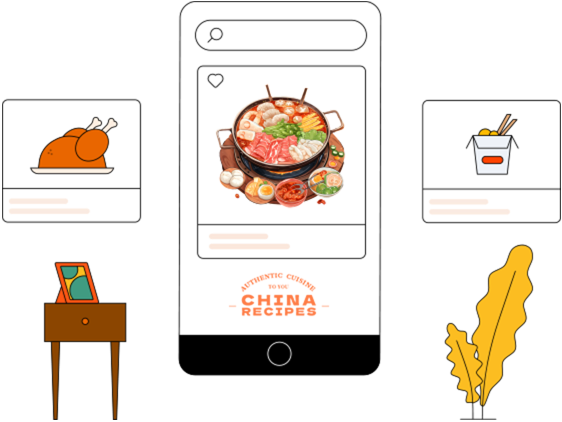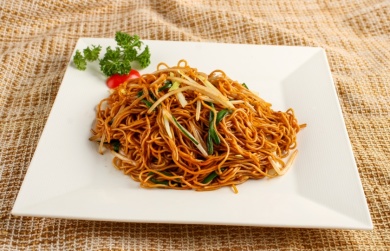What Is Lo Mein vs Chow Mein? Uncovered

Some people always confuse lo mein and Chow Mein. Let’s talk about the differences between them today!
Production method
Lo Mein
To make lo mein, you first cook the noodles, then take them out and drain them. On this basis, you can directly add seasonings and mix them evenly, and pair them with various stews or sauces. Take the classic Beijing noodles with soybean paste for example. After the carefully rolled noodles are cooked and taken out, pour the fragrant soybean paste on them, and then add various side dishes and mix them, and a bowl of delicious lo mein is ready.
Chow Mein
The preparation of chow mein is a bit complicated. First, the noodles must be boiled or steamed, then rinsed with cold water and drained. Next, the noodles are put into a pot and fried with cooking oil. During the frying process, vegetables, meat and other rich ingredients are usually added to stir-fry together, so that the noodles can fully absorb the aroma and oil of the ingredients. For example, the chow mein with shredded pork that we see every day are stir-fried with noodles, shredded pork, vegetables, etc. until they are well-flavored.
Taste characteristics
Lo Mein
The noodles have a relatively light taste, and the noodles themselves retain a certain toughness and chewiness. At the same time, the seasoning is rich and mellow, and you can clearly feel the unique flavor of the sauce or stew in every bite, as if your taste buds are dancing in the mellow taste.
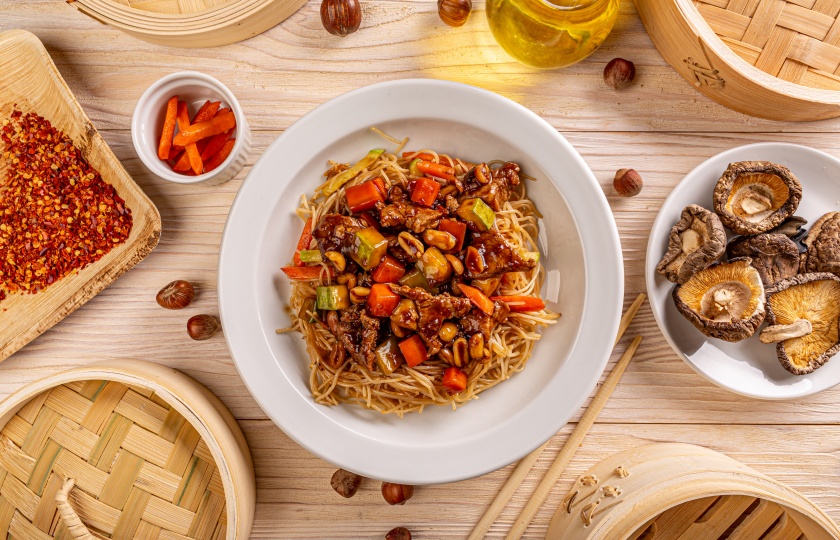
Chow Mein
The taste of chow mein is richer and more diverse. After being fried, the noodles will have a slightly burnt aroma on the surface, showing a wonderful taste of crispy on the outside and tender on the inside, and it also feels oily when eaten. Moreover, because the noodles are stir-fried with various ingredients, the various flavors blend together, making every bite a perfect fusion of multiple flavors.
Appearance
Lo Mein
The noodles of lo mein are relatively loose, and each noodle is evenly covered with sauce or stew. Its color mainly depends on the color of the seasoning, and the overall appearance is relatively moist, as if it is gently wrapped in delicious sauce.
Chow Mein
The noodles of chow mein will stick together a little due to the frying process, but they are not too sticky. Its color usually becomes darker due to the frying process, with a glossy luster. At a glance, you can clearly see the noodles mixed with various colorful side dishes, like a colorful painting.
Food pairing
Lo Mein
Lo mein is served with a variety of ingredients, mainly with stews or sauces made from vegetables and meat, such as the homely tomato and egg stew, the fragrant eggplant and diced meat stew, etc. In addition, it is also served with some raw shredded vegetables, such as crisp shredded cucumbers and fresh bean sprouts. These side dishes not only add to the richness of the taste, but also bring a refreshing feeling.
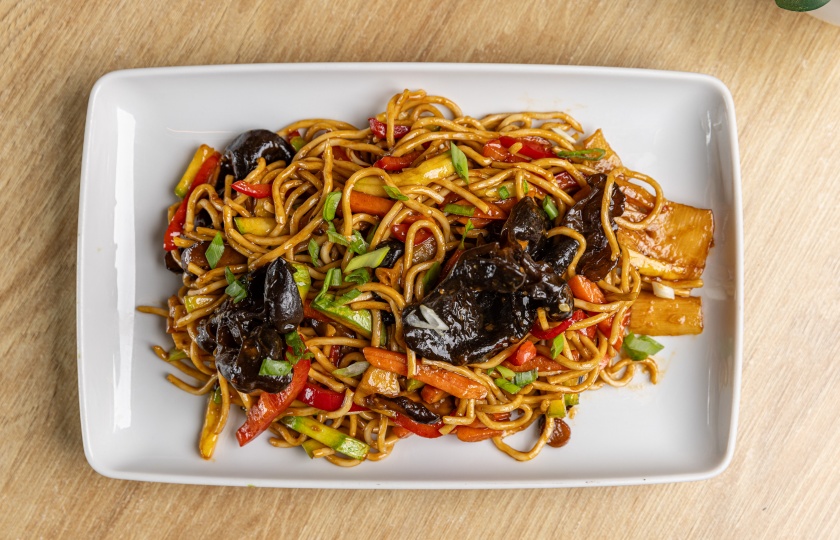
Chow Mein
Chow Mein are often paired with shredded pork, shrimp, and other delicious ingredients, as well as various vegetables, such as spicy onions, green peppers, and sweet carrots. During the frying process, these ingredients blend with the noodles, making the chow mein more delicious and fragrant, and every bite is full of rich aroma.
What Is Better, Chow Mein or Lo Mein?
When choosing a tastier chinese noodle dish, the ultimate factor is personal taste.
While some noodle lovers prefer to stir-fry dry egg noodles into a delicious chow mein, others prefer a steaming bowl of lo mein drenched in sauce.
The choice of noodle texture is often determined by the other ingredients. Consider pairing chow mein with softer ingredients like cooked mushrooms, juicy tomatoes, and bean sprouts, and add firmer ingredients like carrots, broccoli, celery, and snow peas to lo mein dishes.
Why Is My Chow Mein Slimy?
Noodles selection:
The noodles used may be too stringy or too wet.
It is recommended to choose noodles with medium texture and make sure they are cooked thoroughly before cooking to prevent excessive starchiness.
Too much oil:
Adding too much oil may cause the noodles to become too greasy and stick together easily.
It is recommended to control the amount of oil added to ensure that the oil is evenly distributed and add the appropriate amount when needed.
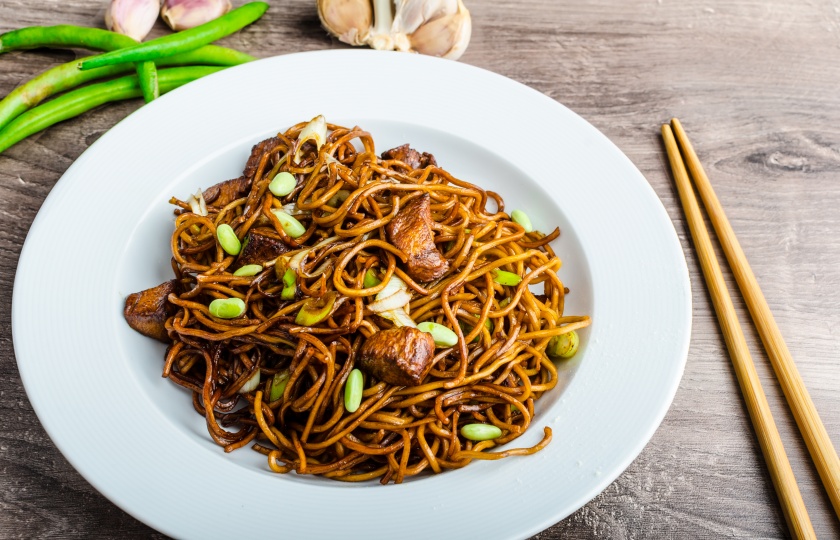
Insufficient temperature:
When frying noodles, if the temperature is not high enough, the noodles will easily absorb too much water and become sticky.
Use a higher cooking temperature to ensure that the noodles cook quickly and reduce the chance of water absorption.
Noodles not fully drained:
If the noodles are not fully drained before frying, too much water can easily cause them to become sticky.
Make sure the noodles are thoroughly drained before frying, or gradually dry them out during frying.
Dressing is too thick:
Using condiments that are too strong, such as soy sauce, vinegar, or sugar, may cause the chow mein to be too sticky.
It is recommended to control the amount of condiments, add them gradually according to personal taste, and ensure even distribution.
Excessive stirring:
Over-mixing the noodles will cause them to become mushy.
It is recommended to stir-fry the noodles gently and avoid over-stirring to maintain the shape and texture of the noodles.
Wok selection:
Frying the pan may result in uneven temperature, with some parts being too hot, which can easily make the noodles sticky.
It is recommended to use an evenly heated wok with the right amount of oil evenly distributed to ensure the temperature is within the appropriate range.
Add starch:
Some cooking styles may sprinkle some starch on the noodles before stir-frying, but overdoing it can make them too sticky.
To control the amount of starch, sprinkle it on the noodles in moderation to enhance the taste, but avoid overdoing it.





